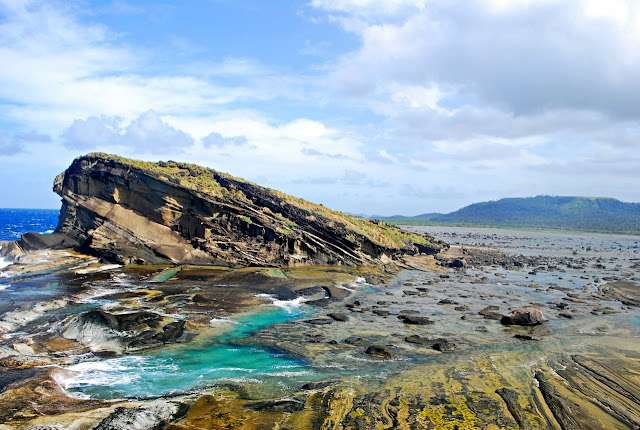
TACLOBAN CITY – A team of geologists from the National Committee on Geological Sciences (NCGS), Mines and Geosciences Bureau (MGB), and the University of the Philippines – National Institute of Geological Sciences (UP-NIGS) recently conducted a three-day assessment in Northern Samar to advance the nomination of Biri Rocks and other geological sites in the province as National Geological Monuments (NGM).
The delegation, which arrived in the province on Sunday, March 23, included Dr. Allan Gil Fernando, a famed geologist and micropaleontologist from UP-NIGS, alongside experts from the MGB.
Their mission focused on geological surveys, site validation, and scientific data collection to support the NGM declaration, the Northern Samar Planning and Development Office (NSPDO) in a report on Tuesday, March 25, said.
The fieldwork involved mapping, rock sampling, and microscopic analysis to determine the age and composition of rock formations in the province.
Among the sites under evaluation were the Biri Rock Formations in Biri town and Mampugay Falls, the highest waterfalls in Samar Island, located in Palapag town.
During their visit to Mampugay Falls on Monday, March 24, the geologists collected rock samples, including conglomerate, a coarse sedimentary rock. While its origins remain under study, experts believe it could offer valuable insights into Palapag’s geological history.
Initial findings also indicate the presence of fossil-rich limestone and calcareous siltstone, a type of sedimentary rock composed mainly of silt-sized particles and calcium carbonate, the NSPDO said.
These formations, it added, suggest that parts of Northern Samar may have once been covered by shallow marine or lake environments, offering clues to ancient ecosystems and past depositional conditions.
Governor Edwin Marino Ongchuan has expressed strong support for the initiative, emphasizing its potential to boost geotourism, scientific research, and environmental conservation under his “Padayon nga Kauswagan” or Sustained Progress development agenda.
If granted NGM status, these sites could attract more tourists, researchers, and geology enthusiasts, further promoting responsible tourism while ensuring their long-term preservation, the NSPDO said.
The NGM program, spearheaded by UP-NIGS, aims to recognize and protect sites of exceptional geological significance in the Philippines. These sites showcase outstanding rock formations, landforms, or geological features that hold valuable scientific, educational, and cultural importance.
NGMs are selected based on their role in understanding Earth’s history, geological processes, and natural hazards. Designated sites serve as outdoor laboratories for geology students and researchers while promoting conservation and sustainable tourism.
Among the recognized NGMs in the Philippines are Chocolate Hills in Bohol; Taal Volcano in Batangas; Banaue Rice Terraces in Ifugao; Hundred Islands in Pangasinan; and Mayon Volcano in Albay.
(JOEY A. GABIETA)



